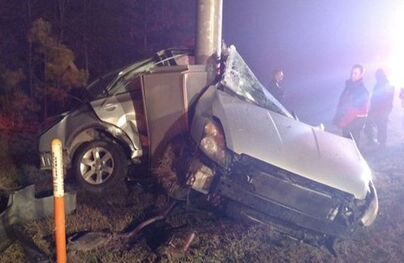 "It’s OK Mom and Dad - My Friend is Driving." These words prompt a sigh of relief from too many Parents, when they should actually raise a red flag! You may already know that car crashes are the #1 Killer of 15-20 year olds in America, (more than drugs, alcohol, and guns combined). You may also know that 7-8 kids leave home every day and never return, and over 800 more are injured, many of them permanently. What you may not know is that nearly HALF of these young people that are lost or injured are passengers! That's right, these kids are basically innocent bystanders. Now, you may choose to believe that they were just in the wrong place at the wrong time, but that is a False Assumption! Many of these tragedies are caused by our failure as Parents to ask the right questions and get tough with our kids if we don't like the answers. What are the right questions? Here are 7 vitally important ones. (Please add your own as you see fit:) 1 – Who is your friend? (Do we know them?)
2- How many kids will be in the car? The GDL (Graduated Driver's License) Law has proven to be an important tool in reducing crashes. The law states that for the first 12 months, a new driver can only have one other person (who is not a parent or guardian) in the car. This includes siblings! NOTE: GDL laws vary by state. We recommend that you become familiar with the GDL law in your state 3- How long has your friend been driving? A week? A month? 10 minutes? It's important for you to know the answer. You want to be sure that the driver, at the very least, has developed some of the basic physical driving skills. Be aware however, that experience is grossly overrated. In fact, it's possibly the worst of the 10 Deadly Driving Myths.There are more than 5 Million crashes each year in the U.S. among "experienced" drivers, 21 and older. Driving is 90% mental and only 10% physical. Experience very often enables drivers with unsafe driving habits, to hide their flaws. Their luck eventually runs out and the results are often tragic. 4 - Any prior crashes or moving violations? This is a good starting point. If the driver has a bad history, stay out of their vehicle! But that isn't enough! A critical mistake that most parents (and many companies) make is to predict future incidents by past history. This is a flawed strategy! A high-risk driver may be skilled enough to avoid problems - for a while. As I mentioned above, statistics show that risky driving behaviors catch up with the driver and the inevitable crash occurs. 5 – Are they a high-risk driver? Many drivers are high-risk, especially young drivers. Contact us at [email protected] to learn how you can pro-actively identify any driver's risk level in 20 minutes!) 6 – What kind of car do they drive? Specifically, you want to know how about the engine – how big, and how many Horsepower. History has shown us that "too much HP - rhymes with T - and it stands for Trouble." 7 – Is it a convertible? NEVER, NEVER, NEVER, let your kids ride in a convertible that does not have a roll bar. Many convertibles do not. (If you're not sure what a roll bar is – Google it.) Then go and inspect any convertible that your kids are planning to ride in. A convertible without a roll bar becomes a death trap in a roll-over or flip-over crash. (Especially for the backseat passengers!) If you aren't asking these questions you are setting yourself up to become one of the thousands of families who lose a child each year in the U.S. Don't allow yourself to become a victim! Too many of us suffer this fate because we trust the current driver training system, which is broken, and we fail to ask the right questions. The good news is - 9 out of 10 of these tragedies can be prevented if we begin training our young drivers in the mental aspects of driving, and help them to establish Safe Driving Habits. Thanks for reading this all the way through. Stay Safe Out There!
0 Comments
Leave a Reply. |
Archives
May 2023
CategoriesAuthorBob Ragazzo is a Certified Defensive Driving Instructor who trains thousands of drivers of all ages, each year in the "Mental Aspects of Driving." |
© Parents Coalition To Stop Teen Driving Deaths Now. All rights reserved.

 RSS Feed
RSS Feed